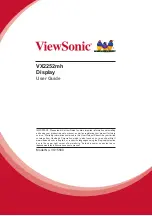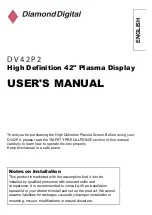
G SERIES PILOT’S GUIDE .
INSIGHT
INSTRUMENT CORPORATION BOX 122, FORT ERIE, ONTARIO, L2A 5M6
23
G3-4 Operating Procedure
Since the introduction of the Graphic Engine Monitor in the early 80’s a new leaning procedure has been developed.
Once frowned upon, leaning past peak to operate on the lean side in cruise is now widely used to save fuel.
Since leaning with reference to temperature was first used in the early 50’s, the distance from peak has also been used to
define a mixture setting. The term “75° rich” is universal and means 75 degrees lower than the peak temperature on the rich
side. Leaning has always employed a relative number referenced to peak temperature.
It is the only consistent metric available because the absolute temperature varies with altitude, power setting and outside
air temperature.
The Graphic Engine Monitor (G3-4) is ready to operate the moment electrical power is applied.
Within seconds after starting the engine, the white EGT bar graph columns will begin to appear on the G3 display.
Each column corresponds to the Exhaust Gas Temperature (EGT) of a cylinder. The lowest exhaust gas temperature that
can be displayed by the G3 is 800° F. In some engines, the throttle will have to be opened to the fast idle range to get an
EGT indication for all cylinders.
As the cylinder heads begin to warm up, the display will indicate Cylinder Head Temperature (CHT) for all cylinders as a
smaller green bar in each EGT column. A horizontal red line across each column represents the maximum allowable CHT.
Digital numbers below each bar graph column indicates the exact EGT and CHT for each cylinder.
The G3-4 offers a unique new function that facilitates leaning on both the rich and lean side of peak.
In previous generation instruments the peak temperature was used behind the scenes to control flashing of a column to
identify peak, but it was never displayed to the user. The new instrument doesn’t display the peak temperature but goes
one step further to display the distance from peak on either the rich or lean side. This matches the mind set of pilots since
the 50’s so it’s what the pilot really wants to know in first place. Previously the pilot had to remember the bar position and
move the mixture to drop a few bars to enrich the mixture. Now the pilot may reference the temperature difference display
directly.
The temperature difference information is calculated relative to peak EGT so it is only available for display during leaning
after peak has been reached. After reaching peak a column width box appears on top of the EGT column containing the
temperature difference from peak. The instrument incorporates fuel flow analysis to also determine which side of peak the
mixture setting is on. It prefixes the temperature with an R for rich or L for lean.
It further distinguishes Rich and Lean by color. The box and number are in white on the lean side and cyan on the rich
side.
The pilot may decide to operate at a certain temperature delta and tune the mixture until the desired number is in the box.
But to make it even easier to operate at a certain predefined temperature difference a user-set threshold is provided. Reach-
ing or exceeding this threshold is annunciated by the temperature box changing from hollow to solid filled.
Precise leaning to a predetermined setting can be as simple as moving the mixture until all the boxes turn solid.
Main Screen Description
Each cylinder has its own display column that displays both EGT and CHT simultaneously.
The columns are numbered with cylinder number. Both temperatures are displayed graphically and numerically.
Numbers below the column are color keyed actual temperatures as shown on the bar.
CHT is shown in green when in allowable range and then the bar and numeric indication turn red when exceeding the redline
limit. A red line also indicates the CHT limit across the bar at the appropriate height.
During leaning the EGT column rises pushing the peak indicator above it.
The peak indicator is just a box of column width that remains at the maximum temperature reached during leaning.
Once the column drops below peak a new temperature difference numerical indication appears in the box showing the tem-
perature difference of the current temperature below the peak. As each cylinder goes just past peak the fuel flow at peak is
displayed in black in the top of the column. Ideally all cylinders will peak simultaneously but of course they won’t.
The variation in the fuel flow numbers will identify how close they are.
The peak indications may be reset by pushing the bottom knob to re-lean the engine.
The top row of indications show RPM, manifold pressure fuel flow, buss voltage, oil pressure and OAT.
NOTE: For leaning instructions always consult the Aircraft’s Operations Hand Book.










































